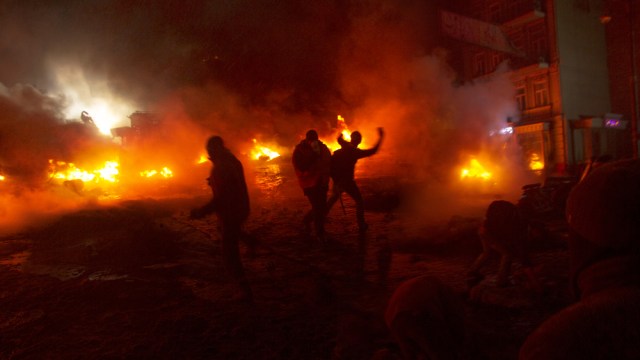Ask Ethan #86: The last light in the Universe
Can failed stars, or stellar corpses, give light to the Universe once again?
“A single tiny light creates a space where darkness cannot exist. The light vanquishes the darkness. Try as it might, the darkness cannot conquer the light.” –Donald L. Hicks
Although it seems inevitable that darkness will win in the end, when the final photon of light streams out of view, it will come much, much later than almost anyone expects. Among the questions and suggestions you sent in was this gem by Andrew Dodds, who asks the following:
I noticed this [particular] system — Luhman 16 — which is a pair of brown dwarfs. I have to wonder — would it be possible for such systems to spiral into one another over a very, very long time and form a real red dwarf? And if so does this mean that we will still have stars around many, many trillions of years hence?
It’s easy to look out at the Universe today, particularly with the best equipment available, and conclude that there’s a nearly limitless supply of “stuff” for us to see. And the longer we look, the more we see!

No matter where we look in the sky:
- the center of the Milky Way,
- the hearts of nebulae or star clusters,
- towards the galaxies that lie beyond our own,
- or even at a blank patch that appears to be completely empty,
we appear to be surrounded by the luminous expanse of objects in deep space. Each one of them, of course, has their light originating from either a single star or a collection of many.
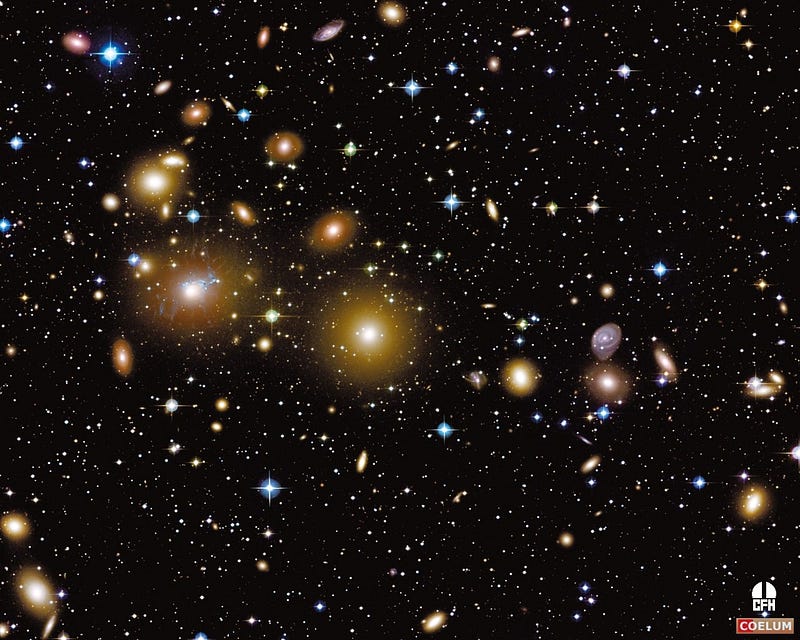
But despite all the stars in our galaxy (some 400 billion of them), all the galaxies within the observable Universe (170 billion at minimum, and most likely many more), and the fact that the Universe is expanding, the amount of starlight available to our eyes is getting less, not greater.
There are two reasons for this, one that affects the farthest sources of light and one that affects the nearest. Here’s what they are.

1.) The Universe is dominated by dark energy. Thanks to three independent lines of measurement — the cosmic microwave background, distant type Ia supernovae, and baryon acoustic oscillations — we’ve determined that matter isn’t the dominant form of energy in our Universe. At least, not any longer. Instead, the normal matter that makes us up and the dark matter that’s about five times as abundant make up only about a third of the total energy present, with the other two thirds being a new form of energy that appears to be inherent to space itself: dark energy.

When dark energy came to dominate the expansion of the Universe some 6 billion years ago, the distant galaxies that were moving away from us began to move away from us more quickly than they were previously. As time goes on, these galaxies get farther and farther away from our own, and the light they’re emitting today becomes unable to reach us in the future thanks to what’s becoming an exponentially rapid expansion of space.
As it stands now, some 100-to-150 billion years in the future, the galaxies of our local group — Andromeda, the Milky Way, the Triangulum galaxy, the Magellanic Clouds and about 40-to-50 other dwarf galaxies — will all have been successfully merged together into one giant elliptical galaxy, and for quite a long time. Thanks to dark energy, all the others beyond will have accelerated away to such great distances that they’ll be invisible to our eyes. But we’ll still have all the stars in our new, giant elliptical home: Milkdromeda.
For a time, at least. Because…
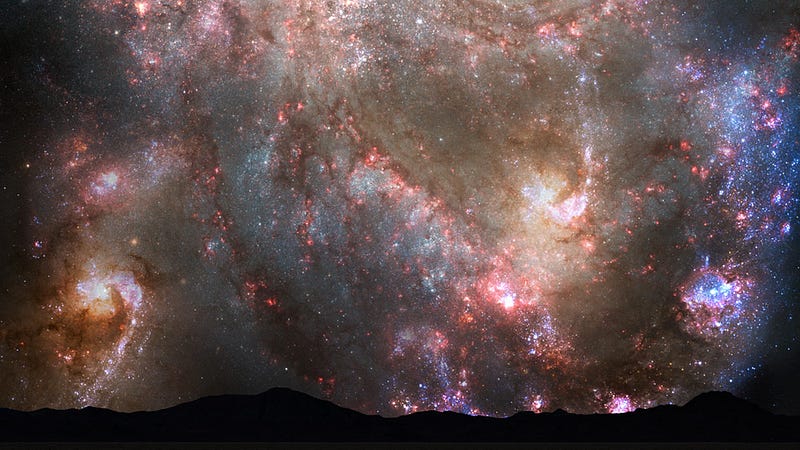
2.) The Universe is running out of fuel for stars. The star-formation rate in the Universe is lower than it’s ever been: at just 3% of what it was at its peak many billions of years ago. While we’ll get a great burst of it when the Milky Way merges with Andromeda, the star formation rate will drop precipitously after that.
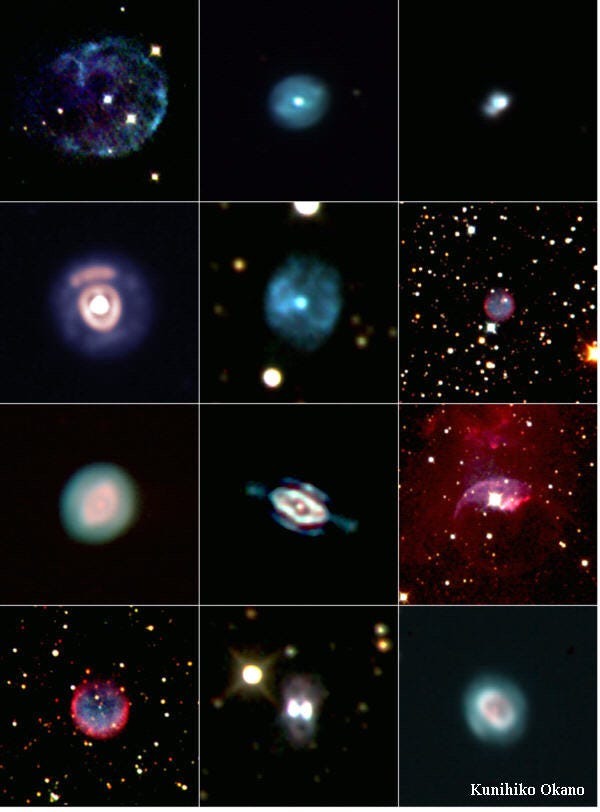
The most massive stars will go supernova, while less massive, Sun-like stars will blow off their outer layers in a planetary nebula, while their insides contract down to form white dwarfs. Now, these supernovae and planetary nebulae spit out plenty of unburned (or barely-burned) fuel as time goes on — hydrogen and helium — so that new stars will be able to continue to form for trillions upon trillions of years. However, the star-formation rate should continue to drop so that tens of trillions of years from now, the formation of even a single star from gas clouds will be a tremendously rare event.

There’s also something else to consider: the lowest-mass stars are the longest-lived stars. The line between what separates a true star from a “failed star” (or a brown dwarf) is whether it can fuse hydrogen into helium in its core, something that requires a minimum core temperature of around four million degrees (Celsius or Kelvin). This requires a mass of somewhere around 7.5-to-8% the mass of our Sun, and represents the line between a brown dwarf and a red dwarf. And the lowest mass red dwarf will burn its fuel for around 20 trillion years, making it longer-lived than any other star.
In addition, red dwarfs have the simplest fate: rather than dying in a catastrophic supernova, or blowing off their outer layers in a planetary nebula, red dwarfs can convert 100% of their hydrogen into helium, contracting down to form a helium white dwarf.
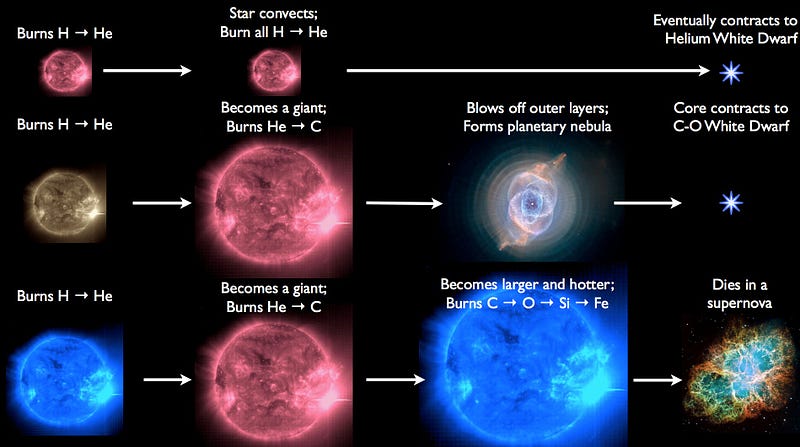
If you had asked us even ten years ago about what the most numerous type of star in the Universe was, we would have told you M-class stars, or red dwarfs, with about three out of every four stars belonging to this class. Given that — plus all the Sun-like stars that will become red giants, blowing off their outer layers and becoming carbon-oxygen white dwarfs — you might think that after maybe close to 100 trillion (10^14) years, all we’ll be left with is these white dwarfs littering the sky.
This isn’t that far off, actually! And considering that these white dwarfs remain “white” for perhaps one-to-ten quadrillion (10^15 or 10^16) years until they cool down enough (via the Kelvin-Helmholtz mechanism) that they no longer emit detectable light, you might think that’s about how long we’ll have anything to look at.
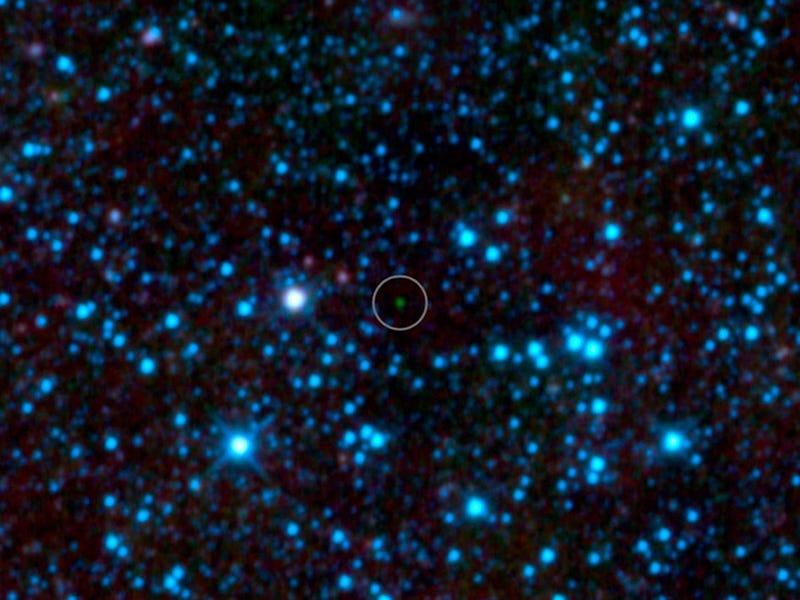
But we know something else now, thanks to infrared surveys like WISE. You see, in addition to all the stars we know of — and the stars that will be — there are also “almost” stars out there in great abundance. If we look at the nearest star systems to Earth, there are two very recent additions: both of them being brown dwarf systems! And just as two red, low-mass stars can merge to form a bluer, higher-mass star, two brown dwarfs that are below the hydrogen-burning mass threshold can, in fact, merge together to become a true star!
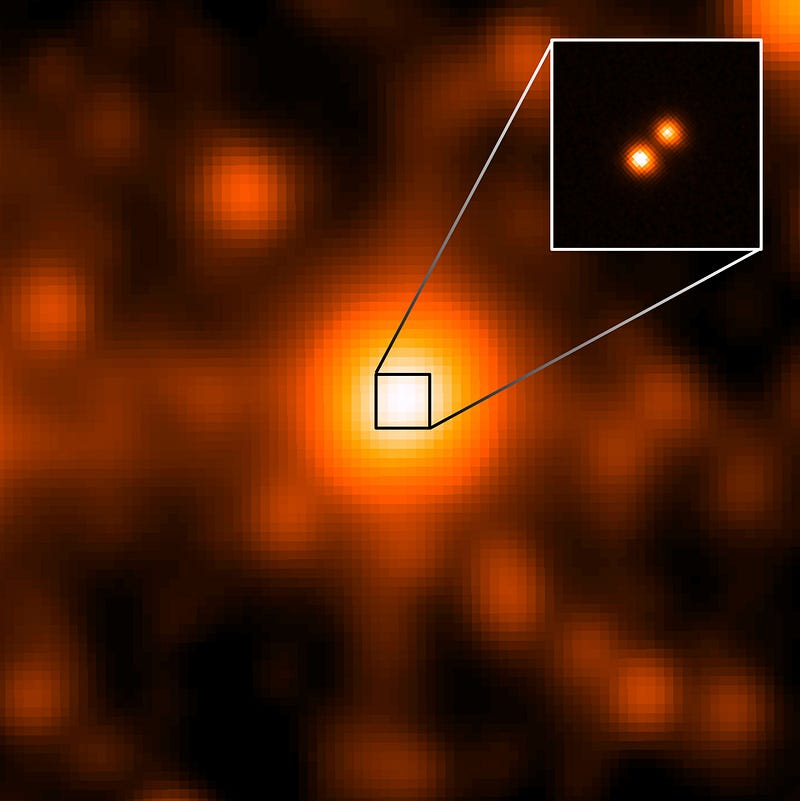
The big question, then, is when will they merge, and what are the other processes competing that could change their fate? From gravitational radiation driving the orbital decay, it will take some 10^60 to 10^150 years for the two objects in Luhman 16 to spiral into one another and merge. Both of these objects are estimated to be at a mass of about 4% the mass of the Sun, so they should form a true star if-and-when they do merge!
But there are two other things going on that make this particular fate for this particular system unlikely.

1.) Violent relaxation. If these two stars were in perfect isolation, all they’d do is eventually spiral into one another. But they’ll spend most of their time existing in a huge, swarm-like galaxy with a trillion (or more) stars and stellar corpses. Somewhat frequently, a star will pass very close by one (or both) of these brown dwarfs, and each time they do, they have a chance to become more tightly gravitationally bound to the galaxy and kick these objects out!
Sure, it’s very unlikely, but given enough time, even unlikely events will happen. The average timescale for something like this? Some 10^18 years, give or take. But even though most objects will be subjected to this ejection, the ones that wind up more tightly bound will have a chance for a different fate…
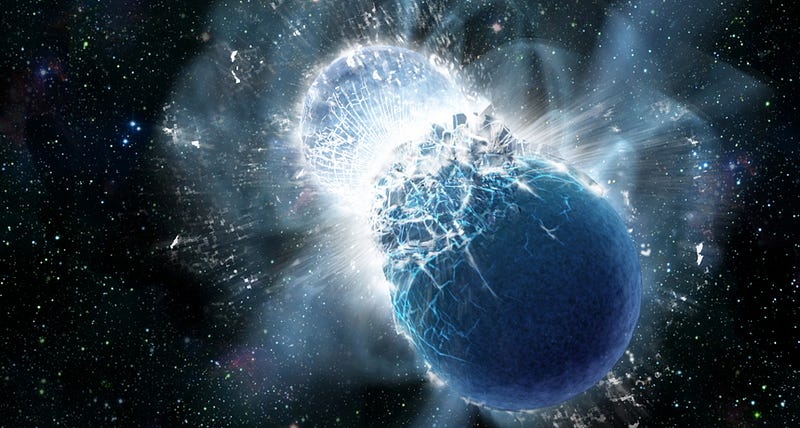
2.) Objects can collide, producing spectacular results! Depending on what collides, any number of things can happen:
- If two neutron stars collide, they produce a black hole and a gamma-ray burst.
- If two heavy (carbon-oxygen) white dwarfs collide, they’ll produce a type Ia supernova.
- If two light (helium) white dwarfs collide, they’ll ignite helium fusion, producing a red giant star.
- And if two brown dwarfs collide, they’ll either produce a more massive brown dwarf (boring) or a new, M-class red dwarf star.
Now what’s the timescale for this? On average, about 10^21 years. So unless you have two brown dwarfs that are orbiting extremely closely to one another (interior to Mercury’s orbit to the Sun, for scale), you’re very unlikely to get inspiraling, even in the far future.
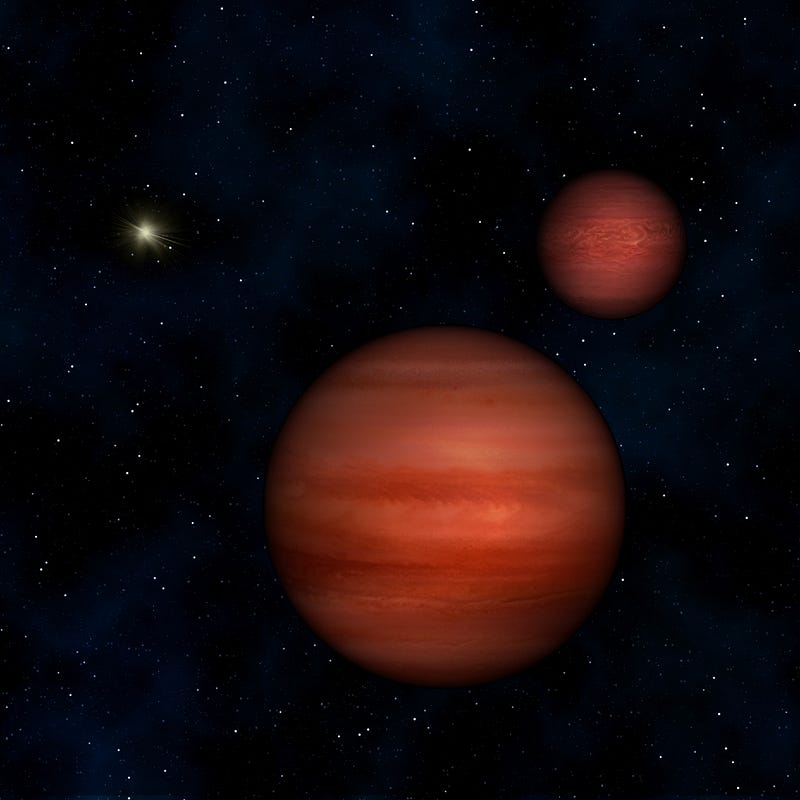
But you are likely — so long as you’re not ejected — to collide with something else. Given the fact that we’ll have both helium white dwarfs colliding and merging, and also large numbers (which we’re only beginning to quantify) of brown dwarfs colliding and merging on timescales of 10^21 years, it’s reasonable to assume that even after the last stars burn out, we’ll get the occasional, rare new star in the distant future.
With a lot of luck, there may even be some planets, spacecraft or other organic material just waiting for one more energy source and one more chance at life. Our last chance at reviving whatever existed before, even for a little while, may literally come when the Universe is a trillion times as old as it is now, and when this chance encounter gives rise to what — at the time — is the only star burning in our observable Universe.
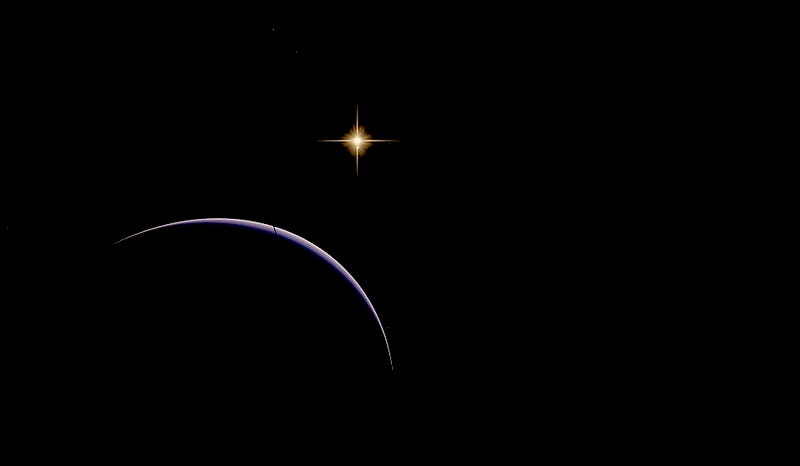
So thanks for a fantastic question and a chance to learn so much more about our distant future, Andrew; I hope you enjoyed it. If you’d like your chance to be featured on the next Ask Ethan, send in your questions and suggestions here, and perhaps next week’s column will be yours!
Leave your comments on the Starts With A Bang forum on Scienceblogs!





